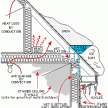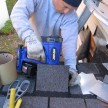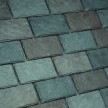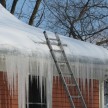Installing a New Roof
By Robert Robillard on Uncategorized
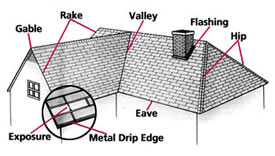
Image: roofing.owenscorning.com
What To Look For When Installing a New Roof
As a carpenter I have done my fair share of Installing a New Roof. As I find myself getting older, I try to avoid it by working smarter not harder. Unless I’m roofing a small addition, I prefer to refer roofing projects to one or two local contractors I know that do quality work.My days of carrying two bundles of shingles up a 32 foot ladder are over…. BUT people will often ask me what they should expect when they contract for a new roof. Here’s a few things to consider:
Cost:
Generally speaking Installing a New Roof should last 25-30 plus years. The cost to replace a roof, as you might imagine, varies. It varies according to your roofing materials (all the way from cheap 3-tab asphalt shingles up to architectural shingles or even slate), the roofing contractor’s pricing, the steepness of your roof, the size of the area to be covered, whether there are two layers to be removed, flashing, chimney flashing issues, access and staging issues to the house, repairing of rotted roof sheathing, adding of vents and a host of other factors.
Generally, you’re looking at costs of $5,000 to $15,000 or more depending on the above factors.
Roofing contractors typically price roofs by the “square.” A square is a unit of measure equaling 100 square feet [10′ x 10′] may cost anywhere from $300 to $400.
What you should be looking for in a roofing proposal
1. Protect landscaping, remove all existing shingles, deposit them in a dumpster.
2. Make minor repairs on roof if in good condition. If not, replace bad wood with plywood or 1″x6″ boards, whichever is applicable to your roof.
3. If more than two layers of shingles are on the existing roof, all existing shingles SHOULD be removed. Many people overlay the shingles to save costs. With the old roof out of the way you will be able to access if there’s any structural damage that may need to be repaired.
It would be normal for an older building to have some dry rot or termite damage to the wood structure. With yet another layer of roofing on the house you will not be able to see, find, or even correct these problems.
If the budget allows I always recommend that you get rid of the old roof layer. Not to mention this second layer adds weight and puts unnecessary stress on the building’s rafters.
4. The contractor will apply one layer of 15-pound felt if slope is over 4/12, or two layers of 15-pound felt if less than 4/12 slope. If slope is less than 3/12, roll roofing should be considered.
5. The contractor will re-flash at all roof penetrations with metal flashing. Metal flashing to be let into masonry mortar joints. (Do not allow them to use caulk or tar for flashing purposes.)
6. Sidewall step flashing should always be evaluated and replacement considered if the same step flashing has been re-used over and over. See step flashing best practices. Replacing side wall step flashing sometimes involves replacing a small amount of house siding.
7. Install new metal drip edging at all edges of the roof.
8. Install an ice and water barrier to prevent backed up ice in the gutters and roofs edge from working itself under the shingles. This ice and water shield should be applied to all edges of the roof, along and up side walls and around all skylight and roof penetrations.
Ice & Water Shield offers cheap insurance from leaks. This protection is designed for sloped roofs in climates subject to ice dams and wind-driven rain.
It is applied to the roof deck prior to the application of the finished roof shingles, the membrane goes under shingles and seals around nails that hold the shingles in place, so water that doesn’t drain properly cannot penetrate the roof.
It also creates a weather-tight barrier against wind-driven rains that cause shingles to lift and leak. Industry standard is to apply one 36″ layer at the roofs edge. I recommend putting two layers 72″ wide! Again… it’s peace of mine and cheap insurance!9. Lay down layers of overlapping asphalt paper.10.Install shingles according to manufactures requirements. Shingles are like anything else – you get what you pay for. Better quality, longer lasting shingles cost more but are worth the expense in longevity.
11. Hand nailing versus pneumatic roofing nailers. Roofing guns if not properly set up and used can be inconsistent in nail depth. This leads to nail heads that stick up a little and sometimes the heads tear into the shingle. Another frequent problem is that nails sometimes enter the roof at an angle, which leaves the nail head sticking up.
Protruding nail heads can tear the shingle above them, and don’t hold the shingle in wind as well as properly nailed shingles.
In my opinion, hand driving roofing nails gives a superior level of quality… it just takes two to three times longer.12. A ridge vent is applied last. Your house may or may not need a ridge vent.
See here.
13. Clean area and use a magnet to pick up nails.




